Zumbo and Carmichel Make the Case for Their Favorite Deer Rifles
We may earn revenue from the products available on this page and participate in affiliate programs. Learn More ›
This story first appeared in the October 1994 issue of Outdoor Life as “My Favorite Deer Rifle Is…”
My Model 70 Winchester in .30-06
By Jim Zumbo, former OL Hunting Editor
It was 1964 when I walked into the small sporting-goods store and inspected the new rifles neatly lined up in the gun racks. I was looking for a deer rifle, which was to be a college graduation gift, and I was just as excited at the prospect of the new gun as I was at receiving my forestry degree.
I knew exactly what I wanted before walking into the store. Being a loyal fan of Outdoor Life’s legendary gun writer Jack O’Connor, a Model 70 Winchester in .270 caliber was my singular choice. Nothing else would do.
The clerk frowned at my request and suggested that I look at the fresh inventory of Winchesters, all of them modern versions of the Model 70. A lone rifle at the end of the rack caught my eye; it was the pre-’64 Model 70, but it was a .30-06, topped with a Weaver 4X scope.
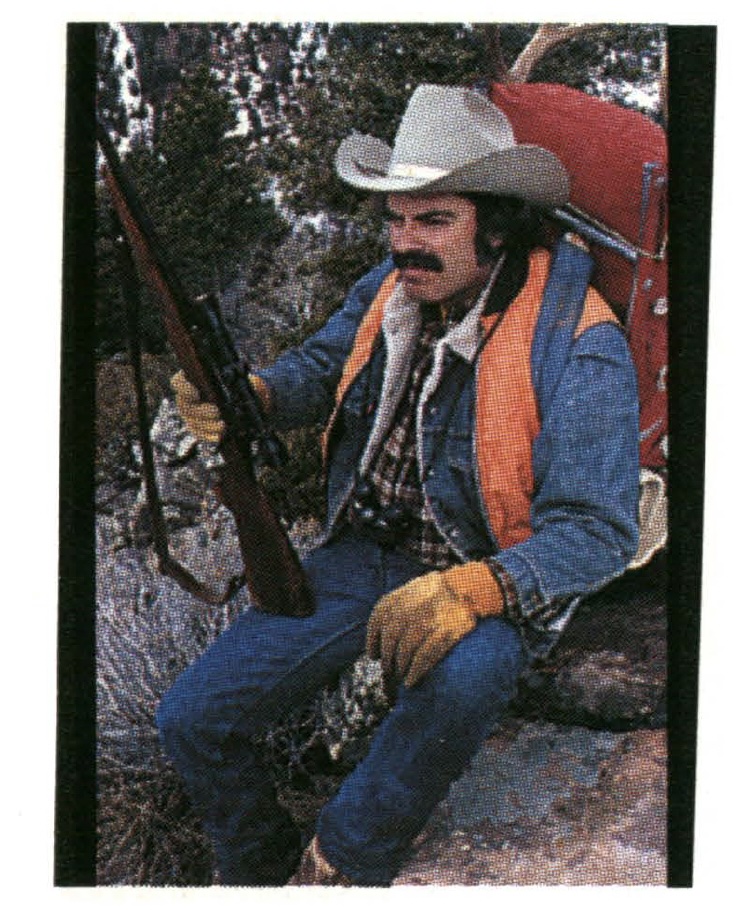
When the clerk assured me that this was the last mint pre-’64 he’d ever have in stock, I decided to go with the .30-06, but I was mildly disappointed. I had no other choice because my future father- in-law’s instructions were to select the rifle from this particular store where he had a charge account.
Rock chucks, Western versions of Eastern woodchucks, were my first quarry after an extensive sight-in session at the range. I knew precisely where my bullets were going at 100 yards from a dead rest; now it was time to try long shots from different shooting positions. I’d be hunting mule deer in fairly open Utah country, and I knew that most of the shots would be in excess of 200 yards. I’d already had some frustrating experiences with my Winchester Model 94 .30-30 lever-action carbine (which I’d hocked at a pawn shop to take a pretty lass to a prom) and was looking forward to a firearm that would deliver the accuracy I wanted at long yardages.
When the clerk said that this was the last mint pre-’64 Model 70 he’d ever get, I decided to go with it.
I couldn’t have been more pleased with the results of the chuck hunt.· The Winchester claimed a half-dozen of the crop-marauding pests at ranges out to 3 50 yards. With my ballistics notes in my pocket, I carefully judged the yardage to each chuck, checked my data and centered the Weaver’s crosshairs at the appropriate spot. I missed a number of chucks because I was a novice at distant shooting, but my hits were more consistent as I became familiar with the rifle. Deer season was just a couple of months away; I was as excited as a 6-year-old on Christmas Eve.
The sun had just disappeared over a ridge on opening day when a fat, four-point muley stepped into view from a patch of aspens 250 yards away. It was his final walk.
I cleaned the rifle with loving care that night, running my fingers over the finely checkered stock and feeling the pleasant coolness of the blued barrel. At last I had a deer rifle, as nearly perfect a rifle as I could ever have wanted.
Loyalty and Character
Old Bertha, as she became known, served me well over the seasons, and together we took big game throughout North America. More than 20 years later I sat on a high ridge in Wyoming, caressing that same Winchester. A bighorn sheep lay before me, a fine ram that had lived in lofty, windswept peaks.
For the hundredth time I ran my hands fondly along the rifle, but the gun had taken on a new character over the two decades. Nicks, gouges, scratches and years of wear marred the stock so badly that the checkering was practically obliterated. Parts of the barrel shone silver from years of being thrust in and jerked out of countless scabbards, and tiny spots of rust dotted the old scope.
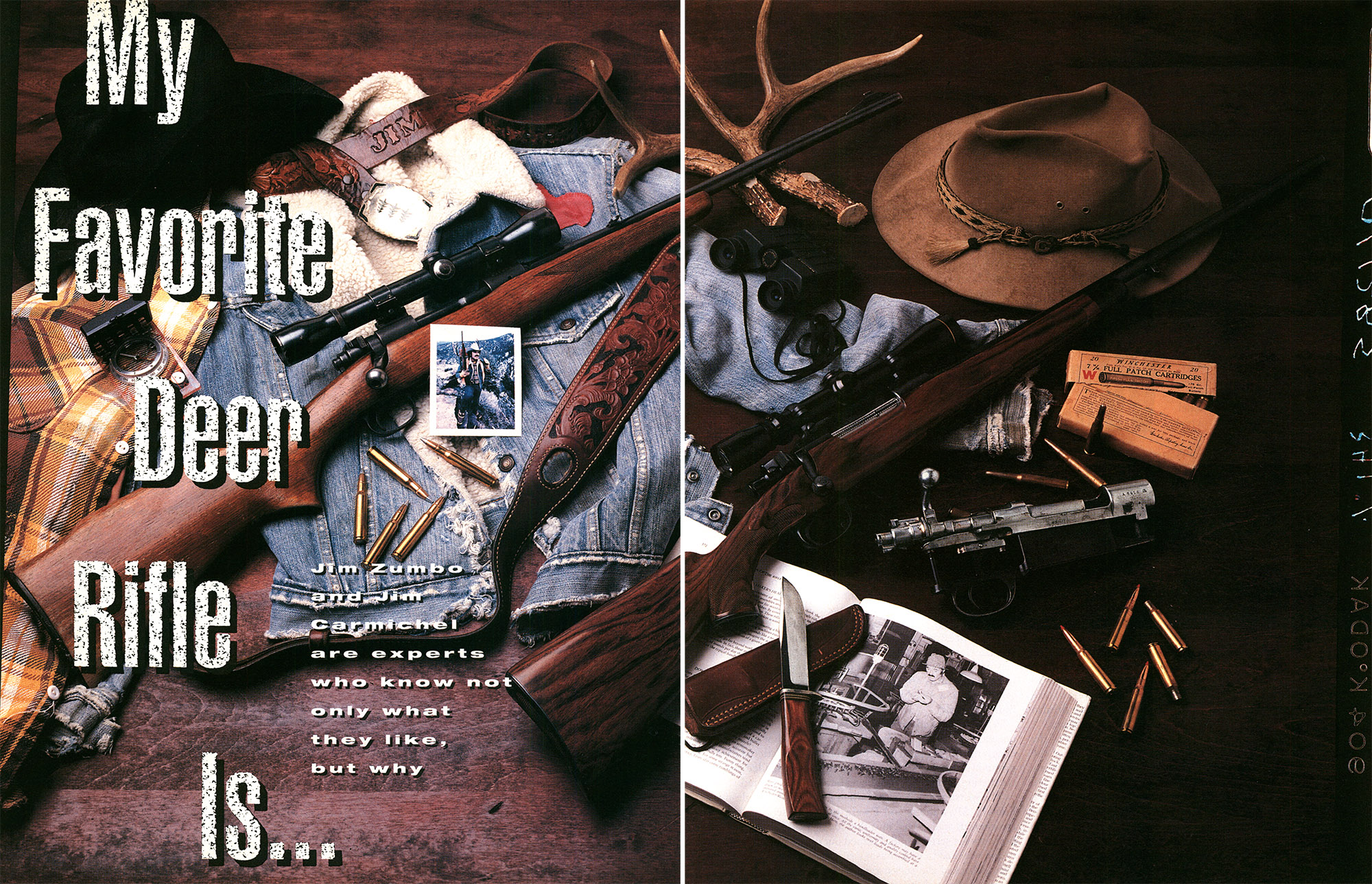
The rifle and I had come a long way. While savoring the magnificence of the high country with my ram lying a few feet away, I couldn’t help but reflect on some of the scratches permanently etched into the stock. Some were mystery marks that had appeared with no recollection of a fall, and others told stories that only I could recall.
The first scratch on anything new is always a time for despair. My Winchester was broken in on a coyote hunt just a year after I carried it out of the store. While working as a forest ranger in Utah, I often spent several days at a time cruising timber on large ranches. Typically, I’d stay at a cowboy cabin far out in the mountains, and during the evenings after work I’d hike about and call coyotes with new predator calls that were the rave of the hunting world.
When a pair of coyotes appeared in the sagebrush, I dropped one nicely and ran around a little ledge to get a shot at the other as it ran off. I tripped on a rock, and my gun clattered to the ground. A bright, shiny scar was firmly embedded in the checkering, and I remember being bitterly disappointed.
Read Next: The Best Deer Hunting Rifles of 2024
The worst gouge occurred when I was guiding mule-deer hunters. My hunters and I were riding horseback along a treacherous trail carved into the side of a cliff wall when my horse took a serious spill. I leaped out of the stirrups to safety and watched in horror as my rifle popped out of the scabbard, whacked the rocks soundly and slid down the slope. Miraculously, it hung up in a bush at the brink of a cliff where it would have fallen into oblivion.
Gingerly, I worked my way close to the gun, and with a long branch I managed to grasp the sling and slide it up to where I could reach the rifle. I wasn’t upset at the deep gash and dozens of scratches; I was lucky to have retrieved it in one piece.
At one point in my forestry career I left the West temporarily and for eight years was the forester and game warden for the U.S. Military Academy at West Point. Whitetails were my new quarry, and the Winchester performed just as well in the thick oak forests as it did in the open country of the West. A bit of practice enabled me to quickly locate deer in the scope as they bounded through dense woods, and I learned the fine art of snapshooting at fairly short ranges, seldom more than 80 yards.
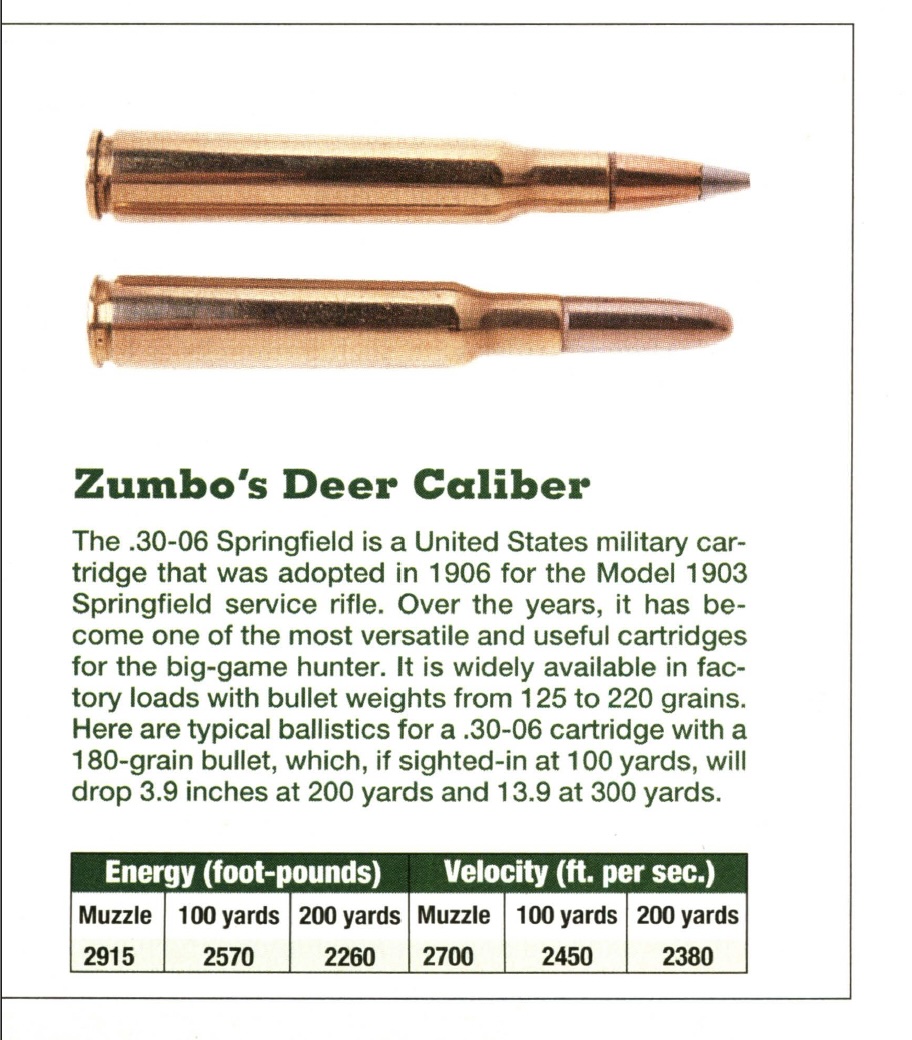
Many more scars were added to the stock in the Westem forests, the most memorable one when I broke through thin ice while walking across a frozen beaver pond. I was just a couple of feet from shore when I plunged through, and in a desperate lunge toward the bank, my rifle twisted off my shoulder and smartly rapped a rock on the shore. A long two-inch scratch mashed part of the checkering, and the scope took a good hit as well.
Some folks believe a firearm should be a thing of beauty, an object that should be nearly flawless and lovely to look at. I have no quarrel with that, but I also believe that a well-scarred gun is a sign of long arid hard usage. A rifle is a tool, but not in the same sense as a hammer or screwdriver. A cherished gun becomes a companion, a reliable friend that you must trust under less-than-perfect conditions.
I have no idea how many deer I’ve taken with the Winchester- probably somewhere around 100, about evenly divided between muleys and whitetails. That the .30-06 is adequate for deer is a moot point; the caliber has proven itself on big game around the world. I could have used dozens of other rifles with good results, but none other than the old Model 70 could offer me such confidence and familiarity.
When I snap the rifle up to my shoulder, it makes an instant and snug fit. The well-worn bolt moves with fluid ease as I chamber a cartridge, and the trigger releases exactly when I expect it to. As the dot reticule in the scope lingers on the target and I’m ready to squeeze the trigger, the Winchester becomes part of me. It exudes the utmost confidence.
A few years ago, while hunting elk with Gen. Chuck Yeager in Canada, Yeager offered me his Weatherby .300 Magnum if I’d retire my rifle. I’d taken three shots to anchor a big bull elk that was a very long distance away. With a twinkle in his eye, and his mouth etched into that famous smile, Yeager told me that I needed a “man’s gun” to hunt elk. At the same time, Outdoor Life editors were politely suggesting that I hunt with other rifles besides my beloved .3 0-06. After all, they reasoned, wouldn’t it be a good idea for me to use and evaluate other firearms?
An Heirloom
They were right, of course, so I decided to give the Winchester to my son, Dan. No way would I allow it to leave our family, and besides, I’d sneak a hunt with it now and then when Dan and I hunted together and the editors weren’t looking.
During a recent mule-deer hunt with Dan and his hunting buddy, we had split up and I hunted the top of a valley while he and his pal hunted the bottom. Just before dark a nice buck appeared and sauntered into a meadow. Once again the old Winchester jumped into my shoulder and I heard the bullet strike the target. Unsure of the hit, I quickly racked in another round and put the deer down for good.
Dan and his friend showed up 15 minutes later, and when they spotted me, Dan wore a huge smile and his buddy had a sheepish grin. “I told you my dad was doing the shooting,” Dan said to his pal. “There isn’t anybody alive in the world who can work a bolt-action as fast as he can.”
Evidently Dan’s friend didn’t believe that I had been shooting because the two shots were fired close enough together to have been shot from a pump or semi-auto rifle. Now then, I don’t perceive myself as a rapid-fire shooter, and there are no doubt a hundred thousand other riflemen who can shoot a bolt-action faster than I. At that moment, though, it didn’t matter.
I was a proud dad at that moment, and I owed my son’s wonderful comment to my old buddy that was slung across my shoulder. How sweet it was.
My 7X57 Mauser
By Jim Carmichel, former OL Shooting Editor
If five hunters ask me to name my favorite deer rifle, they’ll probably get five different answers. My opinion of the moment depends a lot on my latest deer hunt, perhaps a future hunt or just the mood I happen to be in. Ultimately, I resist being pinned down on my favorite anything.
In any event, a Shooting Editor worth his beans doesn’t, or shouldn’t, have the luxury of having a favorite gun of any sort. If, in fact, he achieves the rifle or shotgun that suits his every whim, the time has come for him to unease his double-barreled .577 Black Powder Express, cock both hammers and blow his word processor to smithereens.
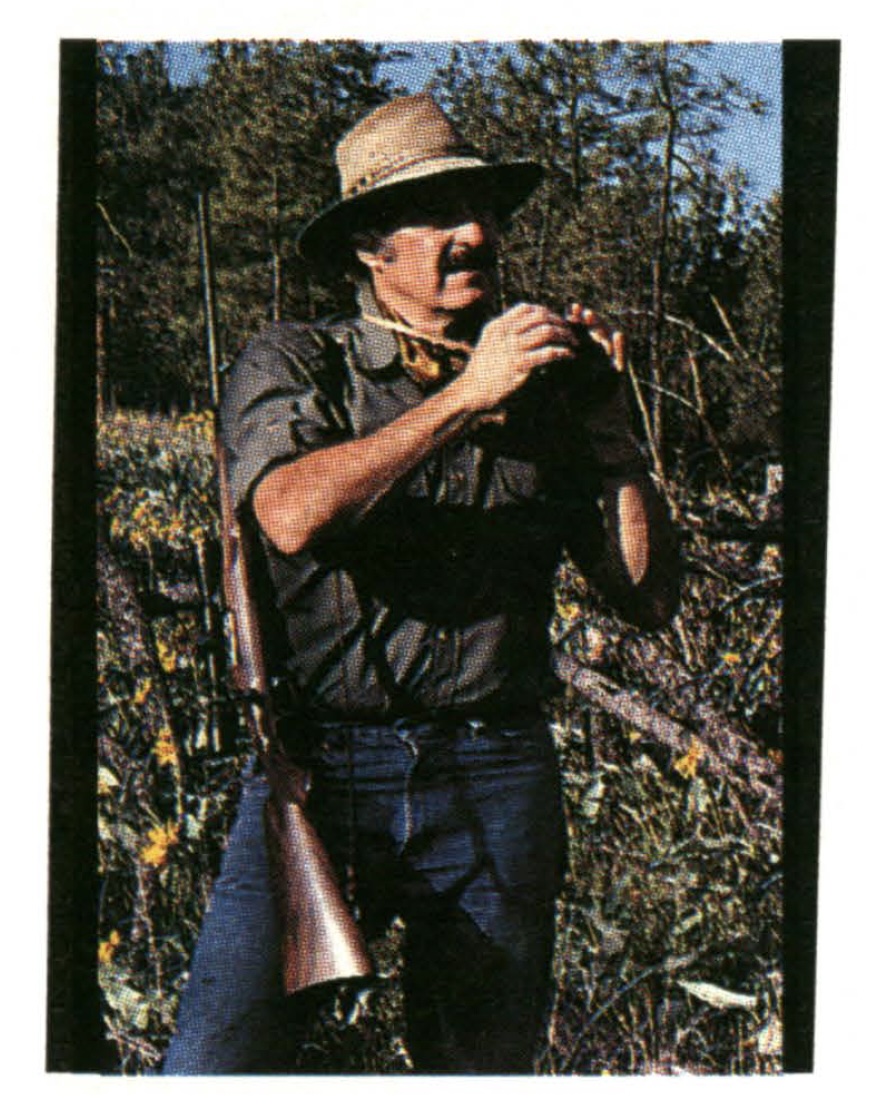
Having said that, I will confess that I do, in fact, have a favorite deer rifle. Its caliber is the old 7×57 Mauser. Is this my favorite deer cartridge? Hardly. I’d be just as content if the rifle were a .270, .280 or, even better, a 7mm-08, .284, .250 Savage, 6.5×55 or any of a half-dozen others. My favorite deer rifle, you might say, just happens to be a 7×57. If I’d known beforehand that the rifle was to become a favorite, I’d have had it made in some other caliber but, still, the old 7×57 gets the job done. With 140-grain bullets handloaded to a modest 2,750 fps, it kicks noticeably less than a .270, .280 or .30-06 with a full head of steam.
Modest and Deadly
Sadly, I’m unable to regale you with a tale or two of when I teetered on the brink of failure but-thanks to my miraculous deer rifle-saved the day with shots that are still talked about from Maine to Arizona. But the 7×57 is an unpretentious round and, in any event, I’ve never had reason to test it at logic-defying distances. In fact, come to think of it, every shot has been so remarkably easy that you wouldn’t be impressed. But on the other hand, the rifle’s list of one-shot kills is just that-a list of one-shot kills. No misses and no follow-ups. o animal shot with this rifle took more than a half-dozen steps, including an elk-size antelope taken during a Tanzania safari a few years back. Notice that I do not add the popular codicil “when fairly hit.”
My favorite deer rifle was built on an outdated Mauser rifle that had been made by the German firm of DWM for a South American government. By the looks of it, when I got it I’d say it had been used by three generations of Federales in quelling an uncountable number of bush wars and guerilla insurrections.
Had I known this particular rifle was to become a favorite it would have been of more elegant origins; a pre-’64 Model 70 Winchester action probably, or an accurate M-700 Remington with its great trigger and quick lock time. Or at least one of the aristocratic commercial Mausers once used by London’s blue-blooded gunmakers. But alas, my favorite rifle began as a refugee from the sweating jungles of South America.
A great gunmaker sees an old Mauser action as a sculptor views a lump of clay. In the hands of Al Bieson, one of the best of our age, my rusty relic became functional art. The military-style straight-to-the-side bolt handle wasn’t just bent and ground to clear a scope in the utilitarian way we so often see, but, rather, like a Tiffany vase, it seems to have been blended of curves and tapers for no reason other than to please the eye and spirit. The thick and clumsy trigger guard was transformed into a curling tendril of utter grace, beauty and function becoming one and the same. Old pits and tool marks were smoothed away as if they were tears from a child’s cheek, and the action rails were hand-honed until the bolt glided like, well, dip your thumb and forefinger in butter, rub them together- and you’ll know what I mean. Like an art lover who time after time returns to a museum to admire a favorite painting, there are quiet moments on every hunt when I contemplate the elegantly sculpted steel that had once been a battered relic for which I paid $35.
Had I known the rifle was to become a favorite it would have been stocked with a magnificent piece of wood. But fine wood is expensive and could have added $500, or even $1,000, to the cost. I needed a hunting rifle, not a showpiece. So the wood is without figure, plain almost, except for its dramatic coloring of smoky amber.
Relax, I’m not going to tell you that the stock of my favorite deer rifle is lavishly embellished with borderless checkering and that the metal is inletted so perfectly that it “looks as if it grew there.” Such gun writers’ clichés have been repeated so often that one would think that they are the hallmarks of a great gun. They aren’t. A connoisseur of fine guns can appraise a rifle from across a room and know instinctively whether or not the inletting and checkering are as near-perfect as human imperfection allows. Because, like a concert pianist who plays his practice scales with breathtaking precision, by the time a talented gunmaker achieves the harmony of line and proportion that make a gun great, he will have long since been a master of inletting and checkering.
If you’re interested, and because I’ve mentioned it, the rifle’s checkering is indeed as flawless as the eye can judge, and its metal and wood unite so perfectly that it is impossible to imagine one without the other. And there is another thing about this rifle, not important really, so subtle that it is hardly ever noticed. Yet it says much. As with many bolt-action rifles, the end of the forend is crowned with a tip of contrasting color. This is a common ornamentation, with the forend tip of production-grade rifles usually being of plastic and higher-grade models being of horn or contrasting wood, most often ebony, as is mine. But even with the finest rifles the tip is attached with a simple flush fit. Where the forend tip of this rifle is set in place, however, it has been carved to a delicate point which, in turn, is inletted into the walnut. Achieving a perfect fit of the carved surfaces made the job many times out more difficult than if they had only been flat, and because the union is so scarcely noticed, one wonders why the maker went to so much trouble. If the fit were less than perfect it would be ugly and reflect badly on his craftsmanship, so why did this gunmaker gamble so much on so little?
Gun writers’ clichés have been repeated so often that one would think they were the hallmarks of a great gun. They are not.
I think I learned the reason years ago when hunting in northern Iran. We’d come across the tents of wandering herdsmen, and in one tent sat an old woman, robed in black, before a loom, weaving a magnificent carpet. Her son, an old man himself, told my interpreter that his mother had been knotting the carpet for many months, and more months would pass before it would be finished. Across the bottom of the carpet there was a row of brilliantly-colored geometric patterns, each exactly like the other except for one, which was smaller and paler than its neighbors. “What went wrong here?” I asked, pointing out the obvious error.
“It’s an affront to Allah for man to be perfect,” the son answered, “so my mother shows humility and seeks God’s mercy by making her carpet less than perfect.” Then he pointed to another place on the carpet, no more than three inches across, that had been woven with incredible beauty and complexity. “My mother also wishes to please Allah with the skill he has given her.” I knelt close beside the old woman to watch her weave, and although a heavy black veil covered most of her face I saw laughter in her eyes. She had played her little joke and had been found out. And so it is with the tiny point of the ebony forend tip, the master craftsman’s challenge, tempting fate: “Look at what I can do, even the simple fitting of a piece of wood can be a demonstration of exquisite skill.”
And so it is with my favorite deer rifle: a chorus of seemingly insignificant details. Some so slight that they seem to be of no importance, certainly not worth the time and effort. But like tiny grains of gunpowder in a rifle cartridge, when working together their effect is awe inspiring.
Test of the Chimney Swift
The stock’s finish looks like hand-rubbed oil, but it isn’t. Instead, tough epoxy was driven into the grain and then rubbed until the wood itself became a weather-resistant shell. After nearly two decades of hard hunting the rifle looks almost new, and the wood has never warped, swelled or shrunk. But it is not the finish, the inletting, the checkering or other pretty things that have made the rifle my favorite. This is another matter entirely.
Like many southern houses, my home has tall chimneys that house families of small, fleet birds called Chimney Swifts. Circling on warm evenings, harvesting the summer’s bounty of winged insects, these darting birds make great targets for testing the agility of shotguns and rifles. I don’t actually shoot at them but only snap the gun to my shoulder and try to follow the swifts’ erratic paths. Few shotguns, and still fewer rifles, have the quickness for this exercise.
With my favorite deer rifle, though, I need only raise my arms, feel the butt touch my shoulder and see the crosshairs playing tag with the racing targets. This isn’t just because the rifle is a speedy lightweight (at 71/4 pounds it qualifies only as a welterweight), and it isn’t because the scope has a picture-window field of view. Actually, the scope is a compact model with a relatively tight field of view that normally would make catching dodging targets rather hard.
To understand the quickness of my favorite deer rifle we need to step back in human history several thousand years and trace the evolution of what is possibly man’s most perfectly developed tool-the garden hoe. In case you’re a city boy and never wielded a hoe, let me tell you that in the hands of an experienced practitioner it is an awesome instrument. Farmers “choppin’ cotton,” hoeing corn or tobacco (which they seldom do in this mechanized age) use the hoe with incredible speed and accuracy, slicing weeds out of the earth only fractions of an inch from crop plants, smoothing the soil and moving on so quickly the eye can scarcely follow. Once, when I was helping my mother hoe her beloved garden, I saw her chop a copperhead into three pieces before it could even think about striking. I was a small boy then and utterly awed by the lightning quickness and accuracy of her hoe. So what do a hoe and my favorite deer rifle have in common? I’ll bet you’re beginning to get the picture, but let me go on anyway.
A Master’s Hand
Bieson rifles, along with those made by a handful of similar-minded artisans, have defined what has become known as the American classic. “Classic,” though, doesn’t mean what it once did and, in fact, has become so mongrelized by pretentious whittlers that the “classic style” only describes a multitude of sins. You’ll know a true classic by its hand. Ah, there’s a fine word, much in vogue these days among gun shop snobs and similar pests who suffer from the delusion that a gun’s hand is only a fancy word for its grip. Chain saws have grips, a place to grab and hang on. Most guns also have grips. Only a few have hands. You’ll recognize a true hand when you hold it because it’s like, you guessed it, holding a hoe! It’s as if the gun is part of your hand, an extension of your mind. Command the arm to follow the eye and the gun naturally goes with it. Look at a tiny, darting Chimney Swift or a running deer, and the crosshairs are there. Aiming is automatic; just move with the target and pull the trigger. Lord Ripon, one of the greatest wingshots of any age, when firing a trio of shotguns relayed by a pair of well-drilled loaders, would routinely have four, sometimes more, dead grouse or pheasants in the air at once. Lord Ripon’s guns had hands.
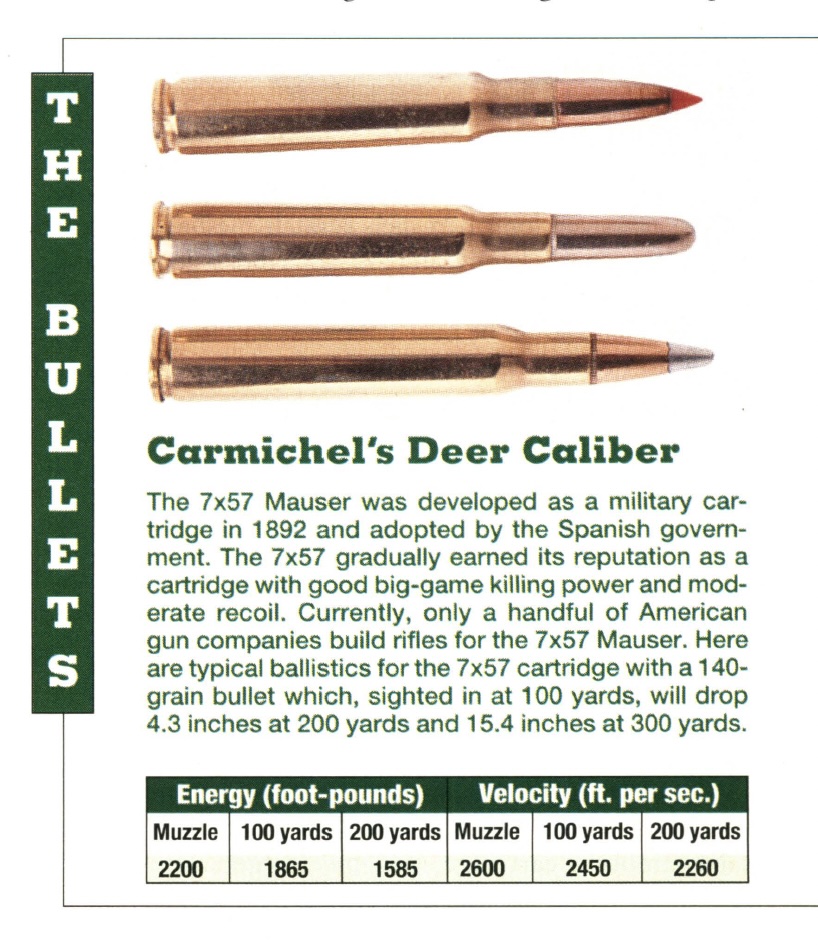
A proper hand, combined with correct comb height is the essence of a classic rifle’s fit and handling qualities. This probably makes you wonder why, if that’s all there is to it, aren’t all rifles sculptured along such sweet lines? Actually, it isn’t nearly as simple as it sounds. Like the composer Salieri, who devoted his life to creating great music only to be eclipsed by Mozart’s elegantly simple melodies, many otherwise talented stockmakers struggle futilely to capture the form, feel and balance of the true classic form.
A few years back the head of a major gunmaking company asked me to help with the design of what was to be the firm’s attempt at a “classic” rifle. I suggested that the designers take the logical approach and simply copy the work of a great classic stylist. But their “copy” totally missed the mark. The head of the stockmaking department explained that the grip area of the classic rifle I loaned them to copy was so subtly contoured that their machinery couldn’t reproduce the delicate lines. He also advised that the critical cross section of the grip (as he called it) was so small that breakage would be a problem, even in manufacturing.
Other gunmakers aren’t even aware of the difference. A manufacturer that describes its stocks as “hand filling” has missed the point entirely, as have those makers that attempt to speed up their sluggish rifles with such gimmicks as forward- mounted scopes, palm swells and other bizarre configurations. All of which are about as sensible as compensating for a broken axle by letting air out of the tires.
Read Next: The Best Hunting Rifles of 2024, Tested and Reviewed
Which brings us to what you may be thinking about now: “That’s easy for him to say. If l owned a rifle by Al Bieson or one of the other great gunmakers, it would be my favorite too. But what about us working guys who can only dream of owning such equipment?”
Actually, most of Bieson’s customers are guys like us, hunters who dreamed of owning one great hunting rifle. To me it was all a matter of really wanting one. So I saved money on the action, selected inexpensive wood, did without fancy engraving and invested in the kind of know-how it takes to make a superb hunting rifle. Even that was a gamble, however, because, as with horses and bird dogs, we never know which will be the favorite until we’ve played the game.
The post Zumbo and Carmichel Make the Case for Their Favorite Deer Rifles appeared first on Outdoor Life.
Source: https://www.outdoorlife.com/guns/jim-zumbo-carmichel-deer-rifles/




